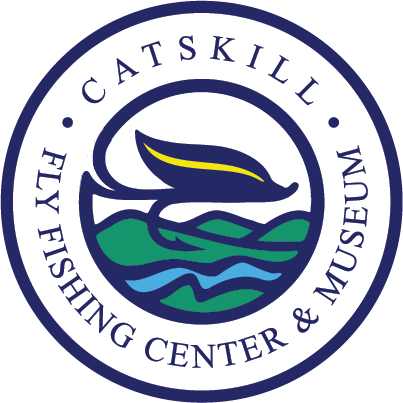The Beaverkill River
Map courtesy of Austin “Mac” Francis from his book Land of Little Rivers
As late as 1873, when the first fishing club appeared on the river, access to the upper Beaverkill was still primitive; a wagon road came up from Roscoe but stopped at a Shin Creek sawmill. From there to the headwaters was still only a footpath; members of the club found it quicker to come in over the top from the next valley to the east.
Although most trout fishermen today are more familiar wth the Beaverkill from Roscoe down to East Branch, the upper Beaverkill was where the trout were in the late 1800s. Any sport fishing then on the lower Beaverkill would have been mainly for black bass. The European brown trout, with its tolerance for the warmer water in the lower rivers, first came to America in 1883 but was not widely established or accepted by Catskill anglers until after 1900.
As increasing numbers of city fly fishers headed to the Beaverkill, those who weren’t members of the new clubs were being welcomed by valley farmers, who opened their houses to visiting anglers. From the top of the river down, a sampling of these newly christened “boardinghouses” included Ransom Weaver, John Slater, Jim Murdock, Ed Sprague, S.A. Voorhess, Mrs. Jersey, and Hank Ellsworth.
River View Inn, one of the well-known Beaverkill broardinghouses, was located a mile or so downriver from Roscoe. John Ferdon added a wing to his farmhouse in the 1890s and opened it up as Hillside Summer Home. His son Edwin changed the name to River View Inn to reflect the growing popularity of the lower Beaverkill among trout fishermen. By the 1920s, River View Inn had attracted a following of angling notables the likes of A. E. Hendrickson, Gene Connett, Louis Rhead, Charles Ritz, and George LaBranche, and it buzzed with excitement at the height of each fishing season. In the thirties, Edwin Ferson’s daughter Winnie ran the inn with her new husband, Walte Dette, but along with many similar Catskill establishments it succumbed to the Depression and ceased operations as a boardinghouse in 1933. Having already tied and sold flies from the cigar counter at the inn, the Dettes became full-time flytiers.
By 1900, the upper Beaverkill had been transformed into a largely posted, private river. A combination of fly-fishing clubs and individuals owners bought or leased almost all the fishing rights from the headwaters down to the village of Beaverkill. There, Trout Valley Farm still catered to the public, but bellow Beaverkill private ownership extended the rest of the way down to Rockland, leaving only a couple of miles of unposted water before the river joined the Willowemoc at Junction Pool.
Unless a fisherman knew one of the new owners or was a member or guest of one of the half-dozen clubs, there was no longer any legal way to fish the upper Beaverkill. Thus, Catskill anglers of the twentieth century necessarily turned their attention to the lower Beaverkill, or the “Big River”, as many of them began calling it, and today, with more than one hundred years of added tradition and publicity, it is this part of the river that writers have in mind when they speak of “the most celebrated trout river in the world.”
With allthe right ingredients – easy access to a big, beautiful river full of large brown trout and surrounded by friendly innkeepers- the lower Beaverkill began accumulating the store of characters and legends that have made it unique in angling history.
Although the lower Beaverkill attracts even more anglers than it did in Theodore Gordon’s day, old-timers will tell you that the fishing will never be as good as it was back in the golden era. Certainly a lot had changed, and – regardless of the state of current fishing – one naturally grows nostalgic when talking about the good old days of Catskill angling.
Opening Day of trout season authenticates each year the Beaverkill’s hallowed position among trout rivers. In spite of usually raw weather and trubid waters, hordes of anglers make the annual pilgrimage, ignoring the odds against catching anthing but pneumonia. Indeed, they return more to observe a ritual and renew a tradition than they do to catch trout.
The above is excerpts from Land of Little Rivers, used with permmision from and our gratitude to Austin M. Francis.

